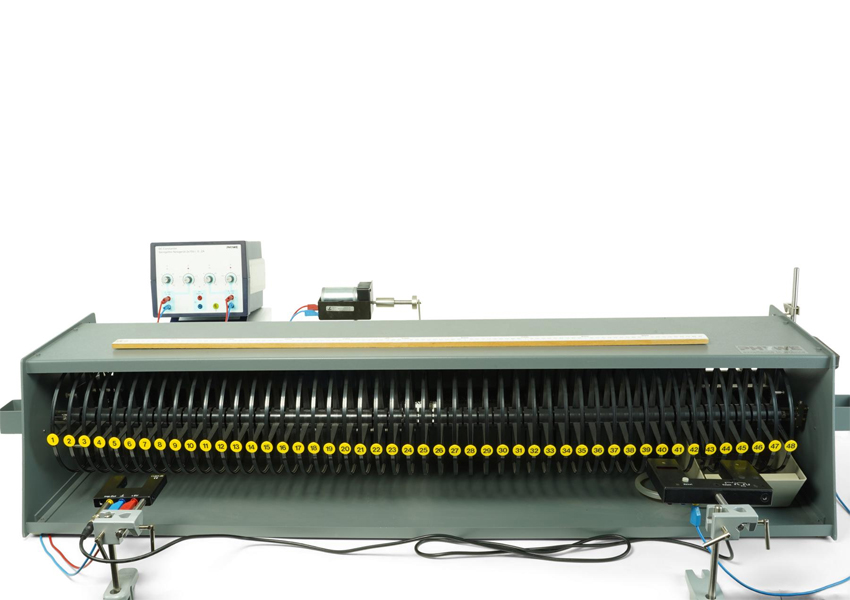Propagation of a periodically excited continuous transverse wave

Principle
The periodicity of connected stationary oscillators is demonstrated on the example of a continuous, harmonic transverse wave generated by a wave machine. The number of oscillations carried out by different oscillators within a certain time is determined and the velocity of propagation is measured. A relation between frequency, wavelength and phase velocity is established. The formation of standing waves is demonstrated and studied.
Benefits
- Large and very illustrative way to watch the propagation of waves including damping, coupling, standing waves and many more
- Slow propagation speed allows an excellent observation
- Easy fixation of wave images at any time
Gearing 100/1, for 11030.93
Gearing 30/1, for 11030.93
Laboratory motor, 220 V AC
Light barrier, compact
Light barrier with counter
Wave machine
Support rod, stainless steel, 500 mm
Meter scale, l = 1000 mm
Connecting cord, 32 A, 1500 mm, yellow
Connecting cord, 32 A, 1500 mm, blue
Connecting cord, 32 A, 2000 mm, red
Connecting cord, 32 A, 2000 mm, blue
Collar adaptor w. connecting cord
Screened cable, BNC, l 1500 mm
Adaptor, BNC socket/4 mm plug
Adapter, BNC-plug/socket 4 mm
PHYWE power supply, 230 V, DC: 0…12 V, 2 A / AC: 6 V, 12 V, 5 A
Right angle clamp expert
Bench clamp expert
Tasks
- The frequency of the oscillators 1, 10, 20, 30 and 40 is to be determined with the electronic counter of the lightbarrier and the stopwatch for a particular frequency of excitation.
- By means of a path-time measurement the phase velocity of a transverse wave is to be determined.
- For three different frequencies the corresponding wavelengths are to be measured and it is to be shown that the product of frequency and wavelength is a constant.
- The four lowest natural frequencies with two ends of the oscillator system fixed are to be detected.
- The four lowest natural frequencies with one end of the oscillator system fixed and the other one free are to be detected.
What you can learn about
- Periodic motion
- Frequency
- Wavelength
- Phase velocity
- Standing waves
- Natural frequency
- Free and fixed end
- Damping of waves
